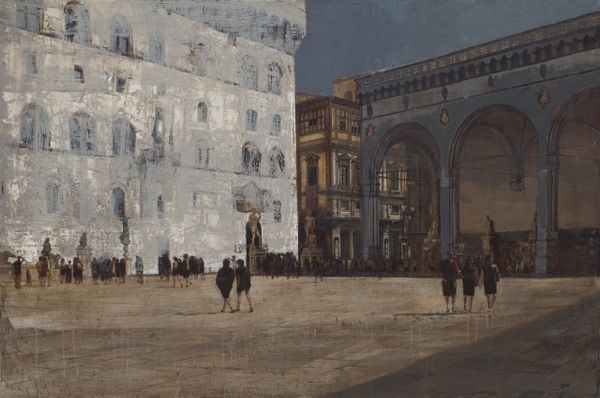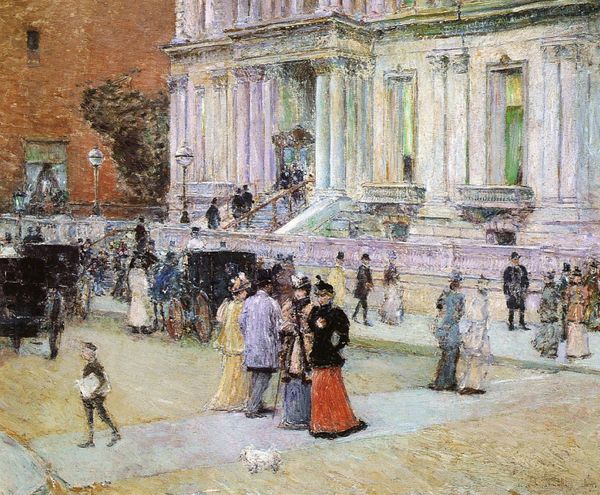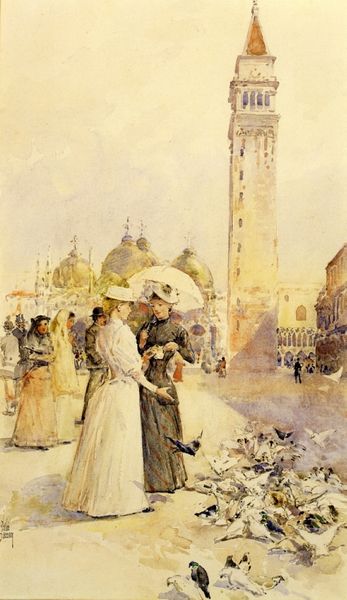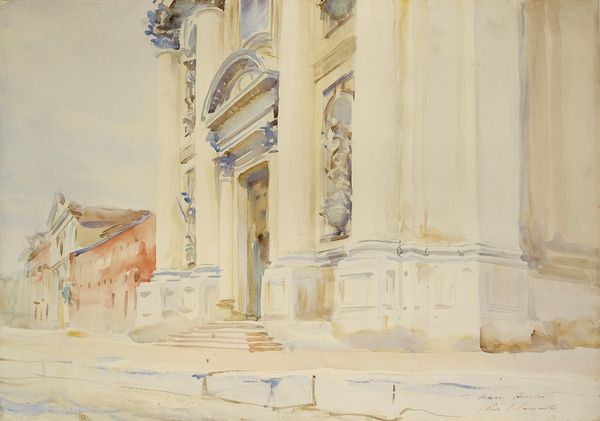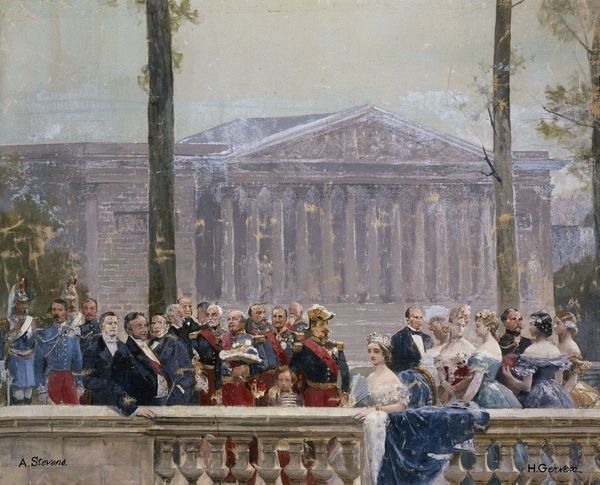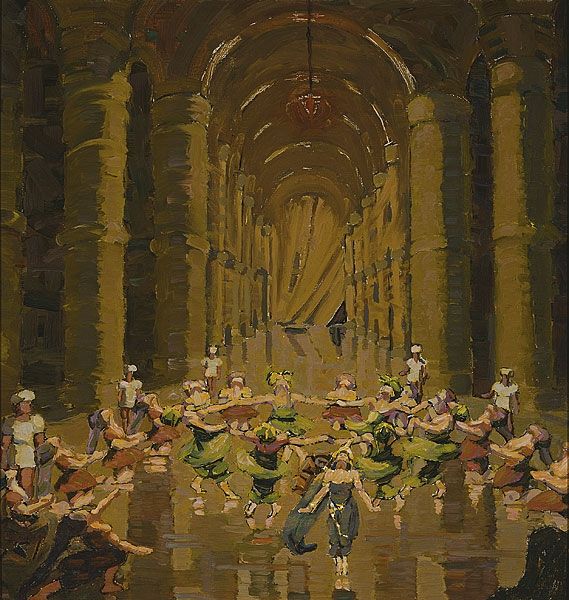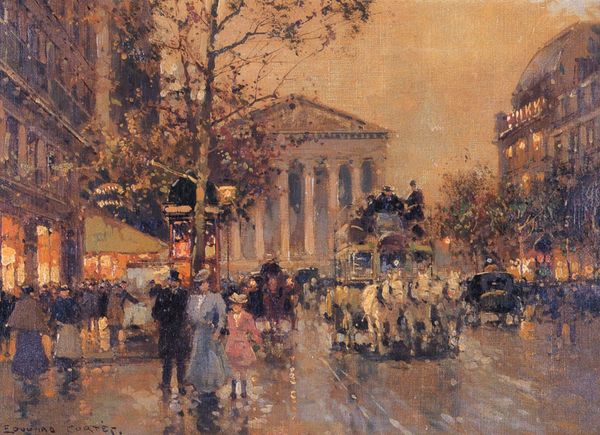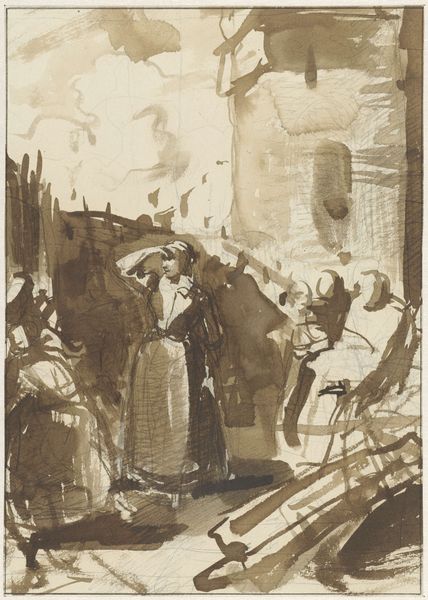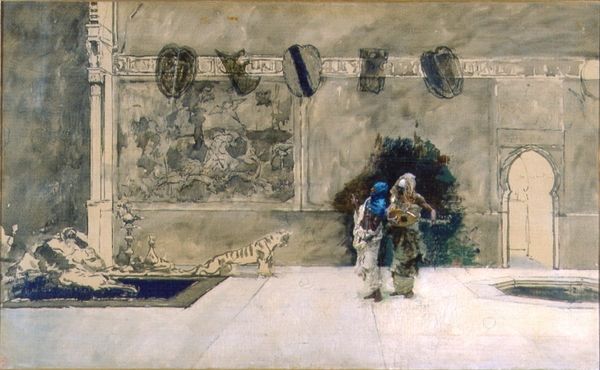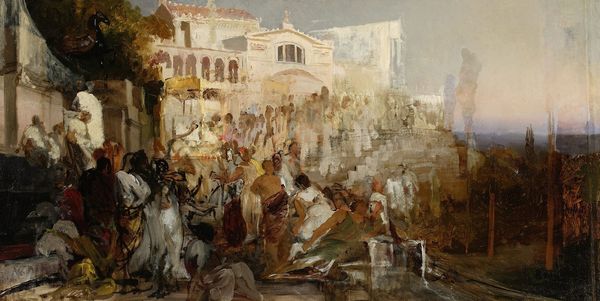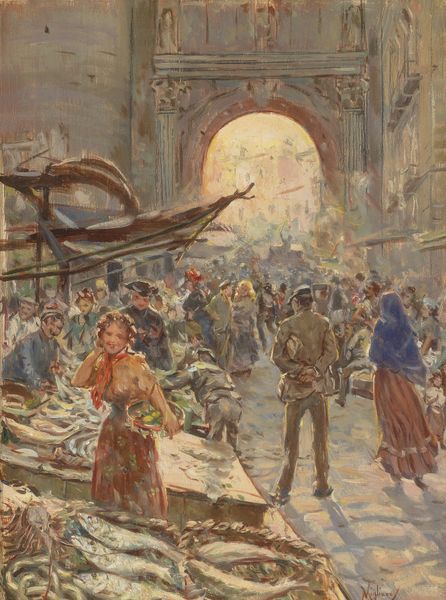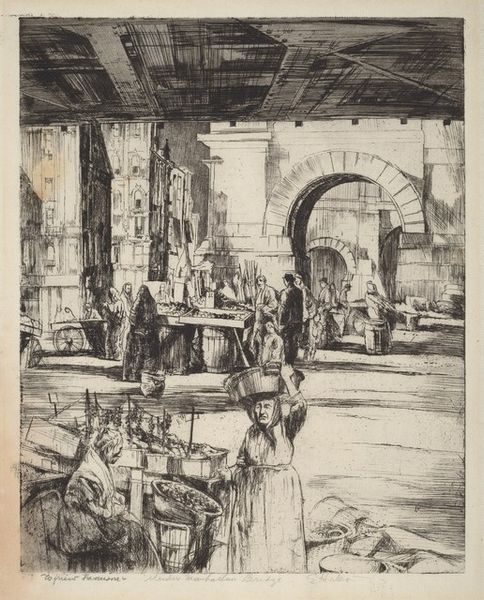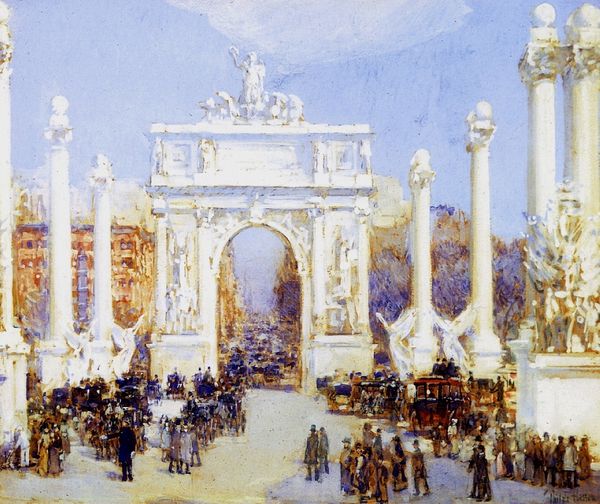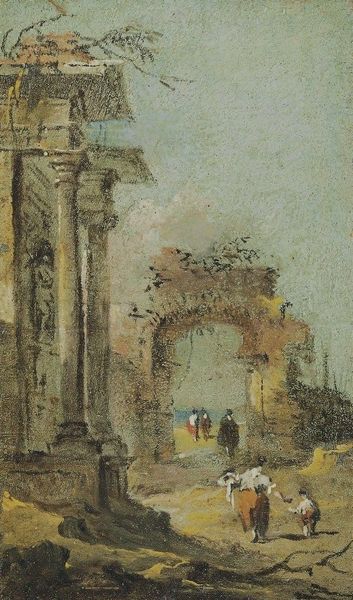
Copyright: Public domain
Curator: This watercolor and gouache work is titled "Scene at the World's Columbian Exposition, Chicago, Illinois," painted by Childe Hassam in 1892. It offers a glimpse into the fair's construction. What are your initial thoughts? Editor: Immediately, I'm drawn to the sheer quantity of figures represented and the chaotic atmosphere the artist depicts. The scene is awash with various laboring bodies; there is much construction and a crowd watching over this process, a stark demonstration of effort and resources. Curator: The composition is particularly striking. Hassam’s layering of architectural forms—the prominent facade on the right, receding structures in the distance—creates depth and imbues the space with symbolic grandeur and depth. The stark white statue in the foreground functions almost like a classical ideal imposed upon the raw, unformed reality. Editor: Agreed. However, focusing on its material, the medium provides critical context. The rapid strokes of watercolor are a visual metaphor for the urgency of building and rapid change. Think of the amount of human activity—artisans, craftsmen, engineers, day laborers, and supervisors whose collective work realized this grand spectacle. We must remember them. Curator: Precisely! The fleeting quality of watercolor beautifully captures the temporary nature of the Exposition, which was meant to be a glorious but ephemeral display. Moreover, the statue's immaculate whiteness contrasts sharply with the grimy tones surrounding it, accentuating the theme of idealistic aspirations clashing with the harsh realities of production. Editor: A further point on the making of the work itself. Hassam would have needed access and, likely, commissioned support to document this site, and its making. The layers upon layers suggest revision or additions; consider the artistic labor required. We can, in turn, imagine what daily life might have been like in such an area. Curator: Considering Hassam's interest in impressionism, this approach to illustrating that unique urban development resonates with notions of beauty, aspiration, and even the limits of what the industrial age promised, doesn’t it? The tension speaks volumes about his artistic intentions. Editor: It certainly does. Examining this through the labor involved in creating both the painting and the exposition challenges a romanticized vision, refocusing attention on those often erased from the dominant narrative. Curator: Thank you. The dialogue has brought forth many angles and further deepened our comprehension. Editor: Indeed; a renewed lens through which to examine Hassam’s artistry, as well as the conditions of labor then.
Comments
No comments
Be the first to comment and join the conversation on the ultimate creative platform.
